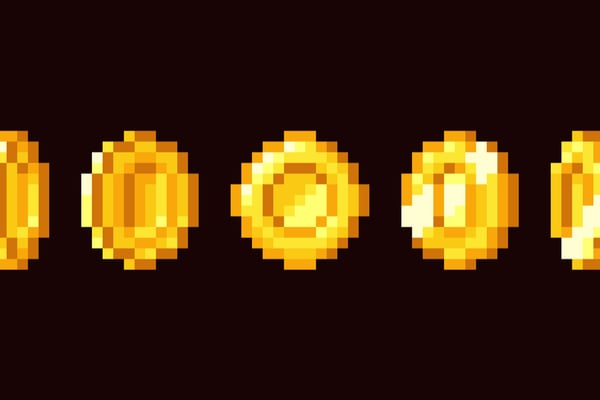How to Use Royalty Free Music to Make Money from Video Games Like a Grownup
Soundstripe Team
Soundstripe Team

Nov 26, 2018
Remember how your mom always told you that you were wasting all your time playing video games? Well, moms around the world are eating their words, because it turns out that playing video games can, in fact, be a lucrative career path for a select few.
As more people flock to Twitch, YouTube Gaming, and Facebook, top gamers are making a killing. Can you join their ranks? It’s possible, but only if you treat gaming like a serious business. That includes how to play music in your video game stream to avoid copyright tangles and Twitch’s infamous muting capabilities.
Let’s look at how big the streaming world is becoming, and how you can use royalty free music to build your gaming career. It’s time to start gaming like a grownup!

Is it truly possible to make a living as a professional gamer? To answer that question, let’s look at the numbers. Although Twitch came into this world less than ten years ago, it has already changed the gaming landscape. While Twitch offers a variety of different content, its bread and butter is live video gaming.
Each day, an average of 15 million people across the globe land on the site. Over 2.2 million Twitch creators broadcast their epic battles and glorious victories each month, adding 4.3 million hours of video to the site. Viewers are hungry for this content. They gobbled up 355 billion minutes of streamed video on Twitch in 2017 alone.
As a result, top gamers have risen to the level of minor celebrities, and their quirky personalities, as well as their fast fingers and thumbs, are writing massive paychecks.
Gamers can earn income by a variety of methods, including:
Before answering this question, it’s important to acknowledge a very important fact. You are not the only person who wants to play video games for a living. In fact, the competition to be a professional gamer is extremely stiff. In truth, the vast majority of would-be professional streamers makes little if any money at all.
However, that doesn’t mean you can’t dream big.
By working hard, showcasing an interesting personality, picking a popular game to play, and consistently streaming in order to grow a fan base, many men and women do make a comfortable living by playing video games. A lucky few make more than a good living; they rake in the dollars.
Influencer marketing agency Media Kix estimates that today’s hottest streamer, Richard “Tyler” Blevins, known as “Ninja,” is on track to take home $5,417,447 by the end of this year. Ninja currently enjoys over 90,000 Twitch subscribers and can rustle up an impressing 80,000 viewers per week who tune in to watch him dominate Fortnight.
Okay, so maybe you can’t be the next Ninja, but even gaming personalities without his massive numbers can still take home big paychecks.
Ali Kabbali, known as Tsm_Myth has 13,840 subscribers, less than a quarter of Ninja’s fan base, and he is estimated to take home a cool $1.3 million a year. Few gamers would turn their nose up for that paycheck.
It’s clear that making a living as a video gamer is possible, but how do you make that happen?

There are tons of tutorials on how to set up your stream, which equipment to buy, which games to stream, and even how to build an insanely loyal following with your copious amounts of wit and charm.
For the next part of this article, we’ll look at an additional success factor that often gets overlooked in the gaming community – the music you play during your live stream and recorded videos.
As a professional gamer, you can’t just stream your favorite playlist while you blast opponents away. You need to use royalty free music, so you don’t get into copyright hot water.
Sure, you could eschew music altogether and simply count on the endlessly looping in-game soundtrack to enthrall your viewers as you live stream your playing. But we and all your future fans wouldn’t recommend it.
Instead, the majority of gamers choose to stream their own preferred playlists while they bash zombies, be-spell orcs, and crush other Fortnight teams. Gamers can use music before and after their live stream sessions to let fans know when to pull up a chair or when to power down. Music is also a critical component of recorded videos, like Let’s Plays, and Walkthroughs.
Why is music so important to a great gaming channel?
First, it adds an additional sensory element to your channel, which gives your viewers a more complete experience. Music also has the power to influence the emotions of your viewers. It can make their hearts pound as you battle a boss or scramble away from a swarming horde of enemies.
If viewers like your personal style, chances are, they’ll appreciate your music selection as well. Since many live stream viewers tend to be doing other activities while the live stream is up, your music selection may be the primary input they’re getting from your stream.
As a professional gamer, you’ll need to define your unique music style and then start assembling playlists that match your personality and the characteristics of your chosen game. This can be harder than you think, because you can’t just toss in songs by your favorite band or start streaming your top Spotify channel.
Gaming culture has long played fast and loose with copyright rules. It wasn’t so long ago when major gaming personalities simply clicked on their iTunes playlists or listened to their favorite Spotify channels as they played. However, as live streaming became more popular and more lucrative, copyright holders started to take notice.
So did the major platforms, like Twitch and YouTube, who definitely didn’t want to be sued for allowing rampant copyright abuse by their users. As a result, both Twitch and YouTube have started to crack down on copyright infringement.
Twitch partnered with Audible Magic to identify and mute copyrighted music in recorded videos. That means if you painstakingly record a three-hour walkthrough of Red Dead Redemption 2 and layer your favorite Britney Spears classics on the game play, your entire video could be muted. (Side note: we’re not judging your Britney mania.)
Currently, Twitch hasn’t figured out a way to punish gamers who live stream copyrighted music, but with so much money on the line for copyright holders, our guess is that it’s only a matter of time before this loophole is firmly shut as well!
YouTube is even more stringent about copyright protection. Its robust Content ID system contains over 75 million active reference files in its database. Whenever you post a video, YouTube’s Content ID will scan it, looking for a match against its database of copyrighted videos and songs. If it determines that you’ve posted copyrighted material, it gives the copyright holder the choice between leaving your video up, pulling your video down, or taking all your ad revenue.
Assuming you don’t want to give all your YouTube ad revenue to Britney Spears’s record label or face the possibility of your beautiful voice being silenced on Twitch, the solution is simple. You’ve got to stay on the up-and-up and use royalty free music in your gaming videos.
Where does a future gaming legend find good royalty free music? Fortunately for you, the answer is: a lot of places. As streamers have started to recognize the fact that using copyright music often isn’t good for their bottom line, a variety of solutions have popped up:
A few forward-thinking music labels have created official gaming playlists that include royalty free music. For example, many gamers love Universal Music’s Gaming Hip-Hop Playlist.
Certain generously bankrolled gaming leagues have negotiated directly with music copyright holders to license their own music playlists. Unless you have the benefit of a hefty trust fund in your back pocket, this option isn’t ideal for most starting gamers
To tactfully encourage their users to honor copyright protections, both YouTube and Twitch have developed their own royalty free music libraries that are free for their subscribers to use. The Twitch and YouTube music libraries contain a variety of songs (and sound effects), but they come with one major drawback. Mainly that when a majority of gamers utilize the library, all their channels start to sound the same. Viewers searching for an innovative new gaming stream don’t want to hear the exact same songs that were playing on the last stream they watch. By taking the easy route, you may struggle to musically stand out from the competition.
New sites, like Soundstripe, have emerged that offer high quality, royalty free music. Some sites charge users per song or limit the amount of songs they can use per month. At Soundstripe, we allow unlimited usage of our growing music library with a single subscription. Our music library includes a variety of different music genres and allows you to filter music based on the emotions and feelings you want to create as you play.
A Soundstripe subscription will allow you to build multiple great playlists, so you can always keep the music on your gaming channel fresh and unique. Together, we can (lovingly) prove your mother wrong and show her that all those years you spent playing video games as a kid was actually focused training for your successful career as tomorrow’s next hit gamer.
Check out our royalty free music subscriptions and then get back to gaming.
Hopefully this article has given you all the info you need about how to add background music or other video game music tracks to your video game developments. Remember, while free game music does exist, it's no match for royalty free gaming music as good game developers can easily tell the difference in quality between these types of video game soundtracks.
Gaming background music doesn't have to be boring classical music found on some old copyright free or public domain website from the late 1990s. Unless you can find original music from a composer (which can be expensive) finding the right royalty free option that complies with all of the copyright laws will always be greatly appreciated and your best bet.
Interested in reading more top resources and getting our best filmmaking tips and tricks? Here are a couple of our most popular articles from across the Soundstripe blog: